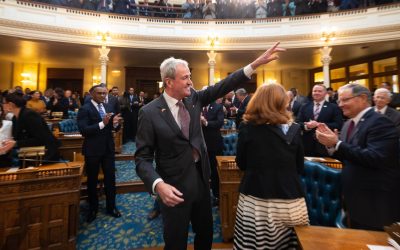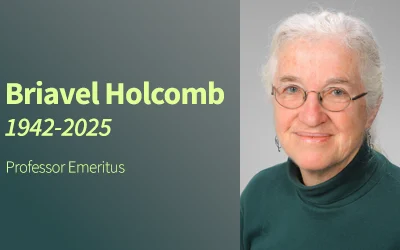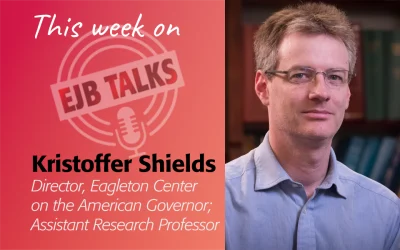News
“Work Trends RU” Podcast with James Moore, Ph.D.
Listen to the latest episode of the Heldrich Center’s Work Trends RU podcast, featuring James Moore, Ph.D., Principal at KPMG. Dr. Moore reflects on his career and discusses the need to modernize workforce and unemployment systems, discusses the critical role of frontline staff and gaps in training for workforce professionals, and considers how AI and technology can improve services for job seekers.
Ian Lefcourte (MCRP ’14) Receives Prestigious Barbara Grace Award
Ian Lefcourte, AICP, a 2014 graduate of the Bloustein School’s Master of City and Regional Planning (MCRP) program, has been honored with the 2025 Barbara Grace Award.
Informatics: A Launchpad to Leadership and Community Impact
The Bloustein School’s Master of Public Informatics gave me the opportunity to combine my background in urban planning with advanced coursework in GIS, AI, and informatics, which is exactly what I needed to start designing the kind of spatial intelligence systems I envision for cities. It taught me to see spatial data not just as a record, but as a living system that can inform decisions, optimize infrastructure, and ultimately improve lives.
Bloustein School Brings Policy Expertise to Second Gubernatorial Debate
In co-hosting the final debate before Election Day, Rutgers scholars worked to elevate the public policy discourse.
For the policy wonks from Bloustein, the focus will be on the candidates’ promises and how, after months of collaborating with ABC7/WABC-TV New York, 6abc/WPVI-TV Philadelphia, Noticias Univision 41, and the performing arts center, millions of New Jersey voters were better informed as a result.
NJSPL Report: The Role of Quality Ratings in Long-Term Care
Researchers evaluated the quality of nursing homes in NJ relative to national trends and analyzed data from the CMS’ Nursing Home Compare five-star public reporting system to track changes in nursing home quality and performance. The report found that while state nursing homes generally outperform the national average, their overall ratings have declined significantly since 2020.
No, BlackRock Isn’t Buying All the Houses—Here’s What’s Really Driving Up Your Rent
Professor Eric Seymour of Rutgers University says the claims have fueled “imprecision around the issue, in part stemming from the confusion between Blackstone and BlackRock, for instance.”
New Jersey is Now in a Recession and it May Get Worse, Moody’s Analyst Says
“We may start seeing signs of a recession, but that doesn’t mean we’re in a recession. The economy is constantly flowing, changing. I don’t see us at the moment being in recession. But there clearly is potential for that,” Pfeiffer said.
Remembrances of Professor Briavel Holcomb
“Bria was already on the faculty when I arrived at Rutgers in 1974. She was a generous and welcoming presence from the start, a gift that was extremely valued by a young faculty member just out of graduate school. For the next forty or so years, Bria was unrelenting...
Announcing the Passing of Professor Briavel Holcomb
The Bloustein School is saddened to announce the passing of Briavel Holcomb, 83, Professor Emeritus and former coordinator of the Hubert H. Humphrey Fellowship Program, on September 27, 2025.
Food & Energy Policy Students Visit Ironbound Farm
In his LinkedIn post, Bulger thanked Charles Rosen and everyone at the farm for arranging and helping facilitate this amazing experience. He said, “the amount of knowledge and passion over there is astounding. When learning about food systems, hands-on learning needs to be a key part of the experience.”
TECH UPDATES: Digital Tools for City/County Communications
The most effective communication is two-way collaboration, not a one-way information stream. Digital tools can help keep communication lines open and active, creating more responsive and vibrant communities where voices are heard and concerns are addressed promptly.
EJB Talks: Careful Campaigns, Big Debates
With just a month until New Jersey’s gubernatorial election, Dean Stuart Shapiro sits down with Kristoffer Shields, Director of Eagleton Institute’s Center on the American Governor, for a special pre-gubernatorial debate episode of EJB Talks. They discuss how the race between Mikie Sherrill (D) and Jack Ciattarelli (R) has so far unfolded cautiously, the slowly-growing appearance of negative ads as the election cycle has progressed, and the challenges both candidates face in breaking through the noisy national news cycle.











